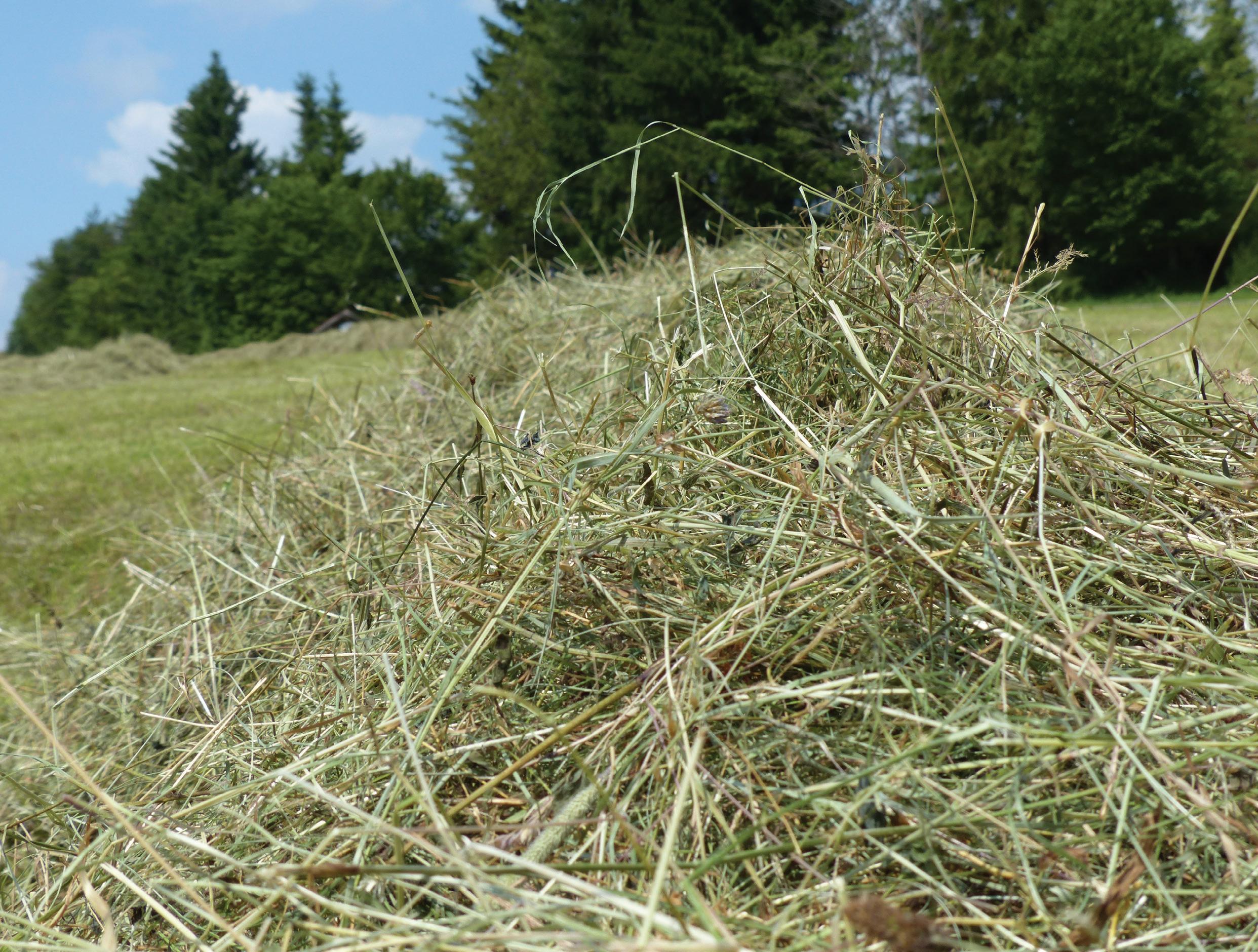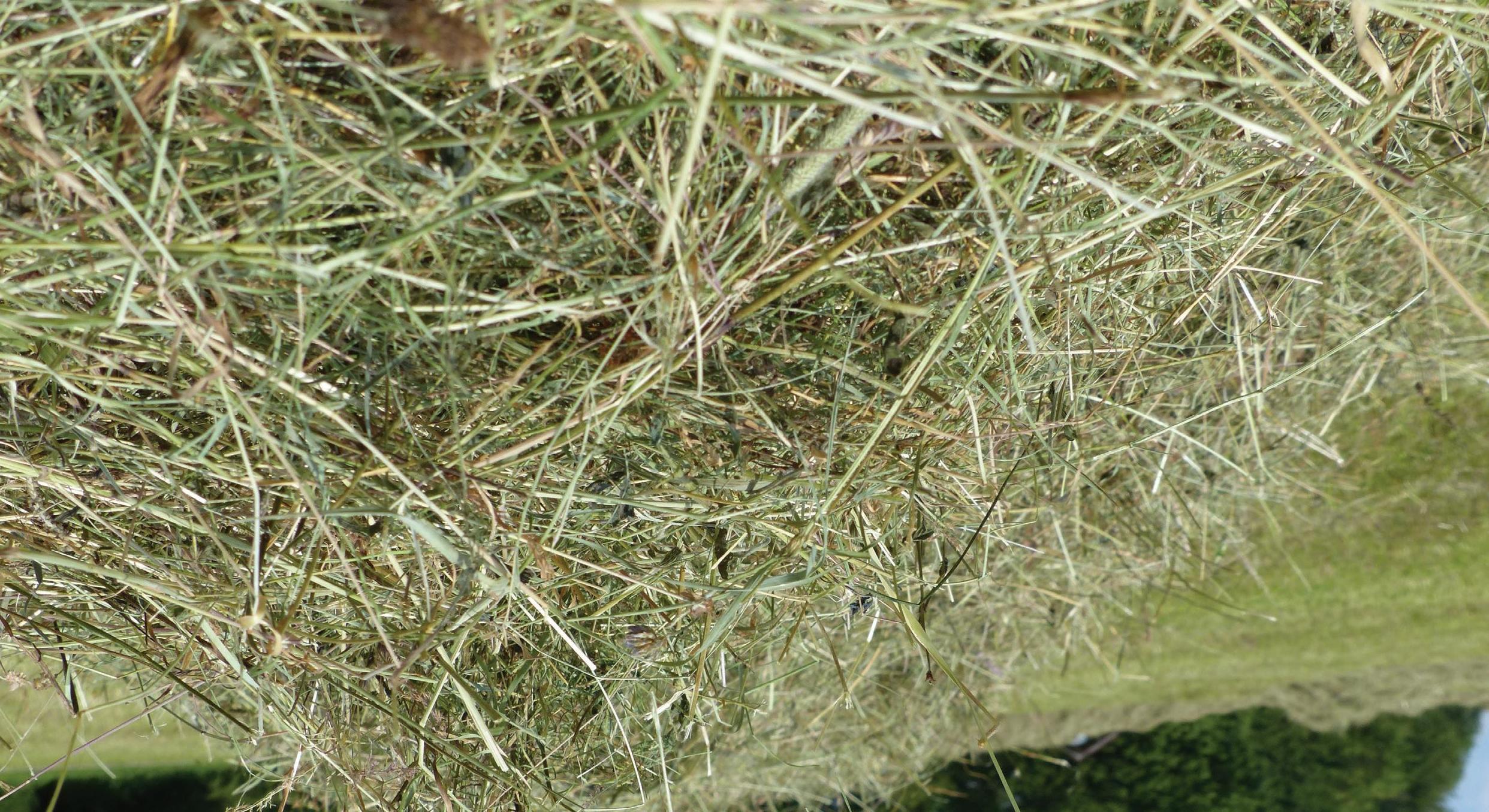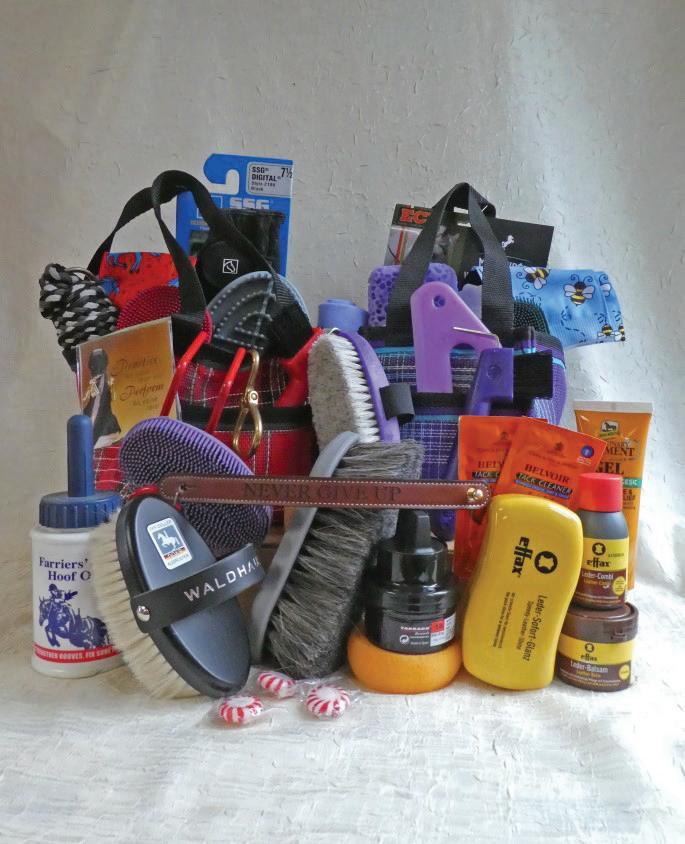
8 minute read
Nutritional Notes
from DISCOVER USPC - The Official Magazine of The United States Pony Clubs - Issue #163 (Fall/Winter2021)
by USPonyClubs
Brought to you by Triple Crown Nutrition, The Official Feed Sponsor of USPC
Hay Alternatives & High Fiber Options
By Jessica Drexler
This summer’s drought has been devastating to our pastures, reducing hay crops and posing potentially serious horse care management challenges. In general, horses need to consume 1-2% of their body weight in hay every day. Poor pasture quality and quantity can mean fewer calories and nutrients in the hay being harvested, hay shortages and higher costs, so we need to be prepared with good quality fiber alternatives, especially when looking toward the winter months. Luckily, there is a variety of forage and high fiber options to help.
Chopped Hay
A horse’s diet should consist of abundant forage or quality pasture. Ideally, longer stemmed hay is most desirable, like harvested hay prepared in small, large or round bales in combination with fresh pasture. Chopped hay is a great option to supplement or replace long stemmed hay. Look for chopped hay with a fiber length of 1-1.5" or longer to assure good gut motility and to give the “scratch factor” effect. This helps promote good gut health and gut muscular waves, known as peristalsis, that help move ingested forage through the digestive tract. Chopped grass forage and alfalfa/grass chopped forage such as those offered by Triple Crown are options, as well as a fortified, low starch and sugar alternative such as Triple Crown’s Safe Starch Forage for horses and ponies with metabolic issues.

Cubes
Forage cubes also work well to help supplement or replace the hay portion of the diet and provides a longer fiber length that is more desirable than feeding hay pellets. Historically, cubes consisted only of 100% alfalfa, but today there are a variety of combinations to meet owner and horse preferences. They can be fed as-is or soaked to make a softer mash for a senior or horses with poor teeth. Triple Crown offers 100% alfalfa and alfalfa-timothy forage cubes. For horses with metabolic issues, there are cubes that are low in starch and sugar with added minerals, such as Triple Crown’s Timothy Balance Cubes.
Complete Feeds
Complete, beet pulp-based feeds are also an option because they contain enough dietary fiber for horses to thrive without or on considerably less hay or pasture. Ideally, you still want to provide some long stem fiber sources with these feeds, but senior horses and horses that have poor or no teeth can thrive solely on complete feeds. Complete feeds are offered for a variety of nutritional needs, such as Triple Crown Senior, Complete, Growth and Senior Gold.
Fiber Alternatives
Other fiber alternatives include shredded beet pulp and pelleted hays. These options have been used successfully as fiber supplements, but only under strict management guidelines. Beet pulp, for example, works very well for senior horses or those with metabolic issues due to its higher calorie content, low starch and sugar and ability to be soaked into a mash. They are best when combined with a feed program that includes ration balancers to help ensure daily vitamins and mineral needs are met.
Horses should continue to consume long stem hay and pasture for as long as they are able, but when that’s not possible, you can choose from a variety of high fiber options to meet your horse’s daily forage ponyclub.orgrequirements. DISCOVER USPC | 27
Polocrosse Comes to Alaska and Hawaii
By Sally Batton with Lucretia Witte
Sally Batton is the Founder of Athletic Equestrian which includes the Athletic Equestrian League, Athletic Equestrian Clinics and the Athletic Equestrian Riding in College Podcasts. She was the Head Coach of the Dartmouth College Varsity Equestrian Team for 30 years and currently teaches clinics to Pony Clubs and community members in Alaska, Hawaii and all around the US. Her book The Athletic Equestrian will be published in January 2022.
The explosion of cheers at one end of the field told me that the first goal of the game had been scored. As the riders trotted back toward me, their happy chortles and congratulations mingled with the sound of seabirds and the lapping waves. We were in Homer, Alaska, putting together days’ worth of clinic work into our final game. The hoofprints of the horses left divots in the sand of the Homer Spit at low tide and the peaks of Mt. Redoubt and Mt. Augustine soared high over Kachemak Bay.
Here in Alaska, Polocrosse thrives, on the opposite side of the world from its beginnings in Australia. The sport, developed in 1938 by a horse-loving husband and wife in Sydney, has expanded most prominently to other Australian clubs, South Africa and the UK. Back in my college days at Lake Erie College in Painesville, Ohio, a group of students took their term abroad in Australia and returned home in love with the game, putting Painesville on the map as one of the first places Polocrosse was played in the US. Most of them lived in my dorm,
and after witnessing their joy, daring and camaraderie in the game, I decided I had to bring it with me when I began my career teaching in the collegiate world.
Throughout my career I’ve taught mostly Hunter/ Jumper and Equitation and noticed that as I instructed riders on technique or body position that they ride with their heads, trying to remember and control every little thing. What I notice when I teach polocrosse is that it frees riders from the analytical approach. In polocrosse, I see riders who may have been a bit unsteady or a bit timid experience a total change of perspective. Sometimes it’s going from riding with two hands on the reins to one, other times it’s the laughter of their teammates that loosens them up. But time and time again I’ve seen a student get a racket in their hand and go galloping down the field with their focus on the ball and the movement of the team, all the selfconsciousness and analytical riding gone out the window. Hand-eye coordination, motor skills, reaction speed all improve—it’s a whole-rider experience.
In the late 1980s I traveled to Australia to research the origins and rules of polocrosse for my book, Polocrosse: Australian Made, Internationally Played, the first book published on the sport. By then I was convinced that it’s enormously helpful for riders to be trained in disciplines besides their primary one, because it helps connect form and function. From my time playing all over the US, I also knew how much fun it could be. I also noticed that it had appeal to riders who loved horses but wanted something different from the precision of equitation or dressage or the individual competition of show jumping. Polocrosse appealed to families and thrill-seeking youth and I wanted to help its spread to other parts of the world.


An unexpected opportunity to do that came my way during my time as the head coach at Dartmouth College in Hanover, NH. A prospective student and her mother came to visit the farm and glimpsed some polocrosse photos while we chatted in my office. In 2013 I was invited for the first time to teach polocrosse clinics in Alaska, at the Jai Capilian Pony Club in Anchorage, the Kachemak Bay Pony Club in Homer, and the Redoubt Riders Pony Club in Kenai. As Melon Purcell, DC of the Homer Pony Club answered when I asked her “why Polocrosse?”: “IT'S FUN! The riders are enthusiastic for the new challenge; riding and using a racket to pass the ball or scoop it up off the ground. It works on riding skills, especially balance and change of direction. There has to be a lot of communication with the horse particularly with legs and seat as one tries to scoop the ball up with one's net. Passing to others uses teamwork skills and adds to that sense of camaraderie.”
But Alaska is not the only exotic place in the US where polocrosse has found a foothold. In Hawaii, the Na Lio Kai Pony Club on Oahu invited me to introduce the sport to their members. As in Alaska, the scenery
Photo Credit: Olivia Yossa


is stunning. We play on a field right across the street from the beach, where the sea turtles are swimming and I will join them after my clinic. Tiare Watts, DC of Na Lio Kai, says she wanted to bring polocrosse to her club “to show riders the different sports that USPC offers and how fun and challenging they can be.” Watts added, “Learning polocrosse helped our members to be more organized and aware in their aids, reins and minds. It also helped them realize they needed their horses to be more responsive to their aids. And lastly they had a blast!”
Summer 2022 will be my ninth year teaching at the Pony Clubs of the Alaska Region, and kindling a love of polocrosse around the US has been a highlight of my career. Pony Clubs in the US have been instrumental in its spread—I remember how when new riders would arrive at Dartmouth they’d see pictures in my office and say, “I know what that is!” I still think it’s amazing that polocrosse has made it as far from Australia as Alaska and Hawaii, but just like those of us on “the mainland” or the “lower 48,” the Pony Clubs I had a chance to visit know a good sport when they meet it.
Sally Batton can be contacted for clinics at: athleticequestrian@gmail.com











